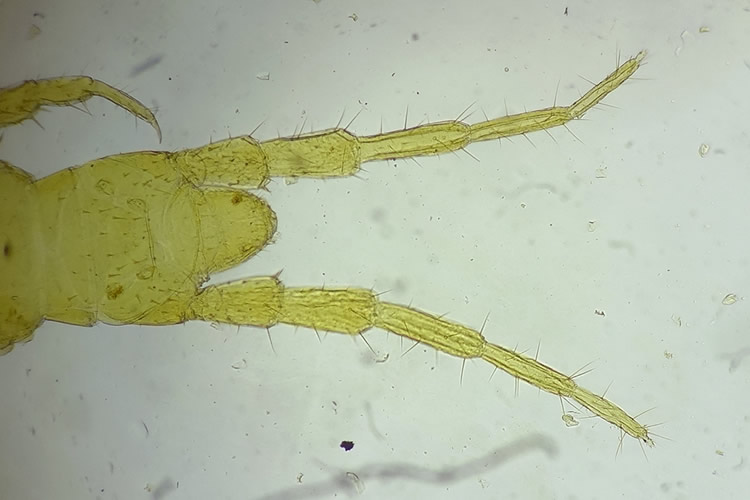Arenophilus peregrinus Jones, 1989
Status:
- GB IUCN status: Data Deficient
- GB rarity status: Nationally Rare
ID Difficulty
Identification
Arenophilus peregrinus is a very small pallid species (to 12 mm), always with 45 leg pairs, and the slender last leg pair terminating in a distinct spiny ‘tubercle’.
More information to allow accurate identification is given in the published identification keys by Tony Barber (2008 & 2009).
Distribution
Arenophilus peregrinus was described new to science from the Isles of Scilly by Jones (1989). It was subsequently found on the Cornish mainland where it is now known from two sites (Gregory & Jones, 1999; Barber, 2008, pg.3).
More recently this species was discovered in northern Portugal (Gregory & Lewis, 2015), the fourth global record, suggesting that it may have a widespread Atlantic distribution and, in keeping with this idea, in 2022 it was discovered on the Atlantic coast of NW France (Desmots & Racine, 2023). It is probably awaiting discovery in western Spain.
Habitat
The initial specimens were collected from the Abbey Gardens, Trescoe (Scilly). The first mainland Cornish specimen was found under a stone near the base of a sparsely vegetated rocky sea cliff, whereas the second was collected from under dead wood in a woodland well away from the coast (suggesting that it is not restricted to coastal sites).
This updated account is based on the 'Centipede Atlas' (Barber, 2022).
References
Jones, R.E. (1989) On a new species of centipede (Chilopoda: Geophilomorpha) from the Isles of Scilly. Journal of Natural History, 23: 627-633.
Gregory, S.J. & Jones, R.E. (1999) Arenophilus peregrinus in Cornwall: A centipede new to mainland Britain. Bulletin of the British Myriapod Group, 15: 28-29.
Links
ChiloBase 2.0 - World Catalogue of Centipedes: https://chilobase.biologia.unipd.it/searches/result_species/3898



